Baeocera youngi (Cornell).
|
Baeocera youngi (Cornell). |
The Scaphidiinae are a fascinating subfamily of rove beetles (Staphylinidae) which, while seldom observed, are apparently abundant inhabitants of many forest floor ecosystems. Most speecies are associated with a variety of decomposing situations where they are mycophagous (feeding on fungi) and myxomycophagous (feeding on slime moulds).
Although in the past Campbell (1991) listed no records for the Maritime Provinces and only one for Newfoundland, there are at present records for seven species from Nova Scotia, one from Prince Edward Island, and four from New Brunswick: a total of eight species from the region. Doubtless other species occur in New Brunswick; collecting efforts for this group there have been meagre.
Research over the past decade in forested habitats in Nova Scotia has turned up many specimens, indicating that they can be quite abundant. Pitfall trapping and Berlese Funnel extraction, however, are required to find them since they are very small and can otherwise escape detection.
For many years the Scaphidinae were regarded as a separate family, the Scaphididae, but more recent examinations of larval structures, male genitalia, and other characters have determined that the Scaphidinae belong within the Staphylinidae (Newton et al. 2001).
Below is a key and descriptions (variously adapted from Downie & Arnett (1996), Löbl & Stephan (1993), & Newton et al. (2001)) to the genera and species which have been found in Atlantic Canada.
Scutellum minute or absent; antennae slender without distinct club; elytral punctures scattered or absent. - 2
Antennomere 3 elongate & cylindrical; scutellum usually invisible; first visible abdominal sternum without an elevated post-metacoxal plate. - Baeocera. 4
Mesepimera very small, in some indistinctly defined; coxal plate on first sternum large, extending to middle of sternum. Body entirely pale rufotestaceous. Head, pronotum, & metasternum vaguely punctate; elytra finely, sparsely punctate. 1.7-1.9 mm - Scaphisoma rubens Casey.
Basal stria uninterrupted, extending all the way across the base of the elytra to connect to the lateral stria. - 6
Small species: 1.15-1.2 mm. Dark brown to black; apex of elytron paler. Antennomere 2 shorter than 3 & 4 combined; 3 shorter than 4. Tip of scutellum exposed; punctation even and fine. - Baeocera indisctincta Löbl & Stephan
Length 1.7 mm or more. Scutellum not visible. - 7
Length 1.7-2.2 mm; Pronotal & abdominal microsculpture usually invisible at 90x magnification; antenomere 3 distinctly shorter than 2 or 4. Black brown to black with apical portion of elytra paler. - Baeocera congenera Casey
Notes:
Scaphidium quadriguttatum Say
This species is recorded for Nova Scotia and New Brunswick. It is associated with old logs and particularly with certain polypore fungi (including resupinate types) (Newton et al. 2001).
It is a very large (3.8 - 5.5 mm) species with very prominent, transverse orange spots on the elytra making it quite unmistakable. The all dark variety, S. quadriguttatum piceum Melsheimer, has not been recorded in this region.
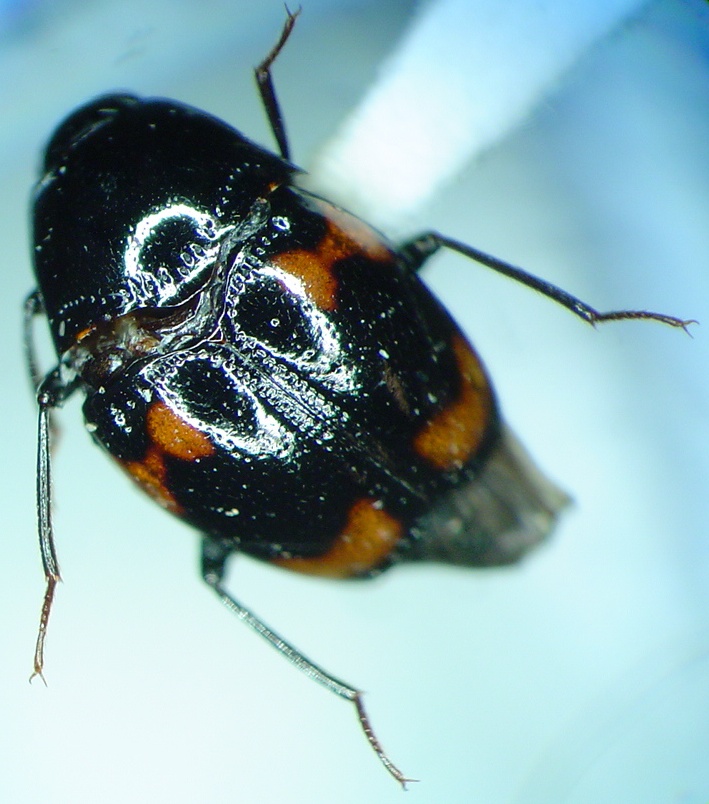
|
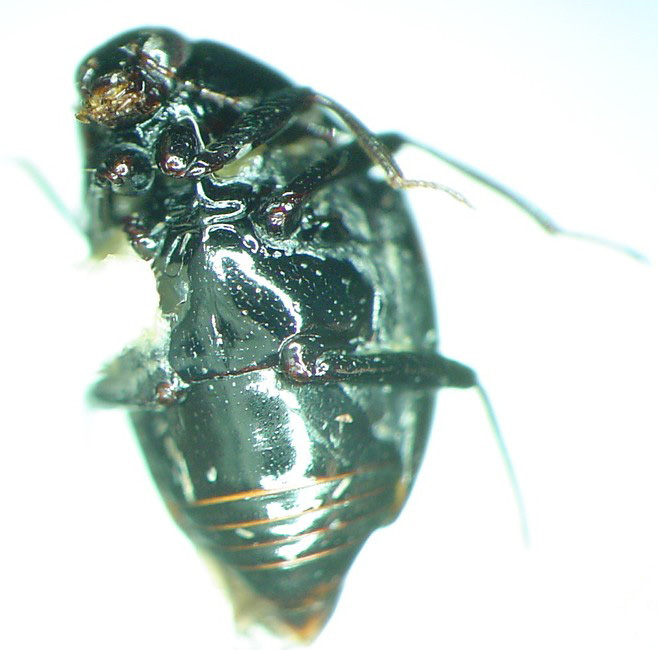
|
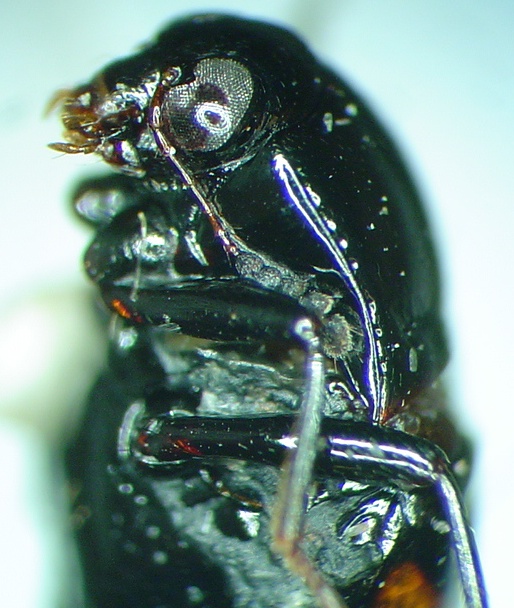
|
|
Scaphidium quadriguttatum |
Scaphidium quadriguttatum |
Scaphidium quadriguttatum |
Scaphisoma Leach 1815
Two species of Scaphisoma, S. rubens Casey and S. lacustris Casey have been recorded from Nova Scotia although S. convexum Say and S. repandum Casey should also be looked for in the region. They are found on logs, often associated with polypore fungi; less commonly on mushrooms or various other fungi and slime molds. (Newton et al. 2001).
The colour differences between the two species are evident in the following photographs. Note also the very short dimensions of antennomere 3 and the fact that the scutellum is visible, both of which distinguish this genus from Baeocera.
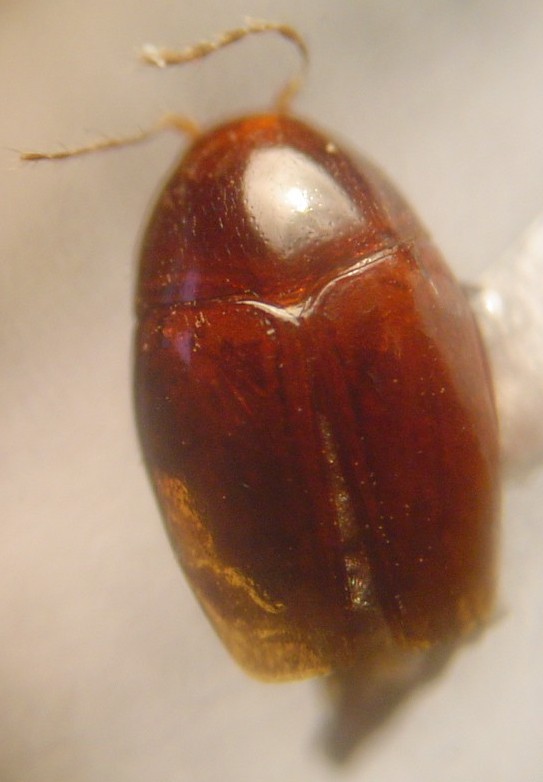
|
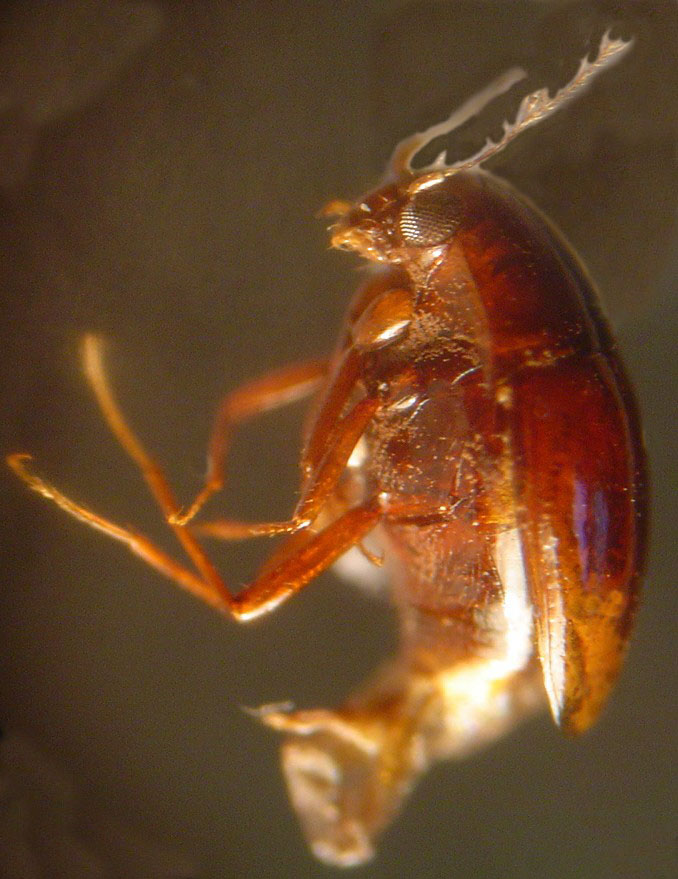
|

|
|
Scaphisoma rubens |
Scaphisoma rubens |
Scaphisoma rubens |
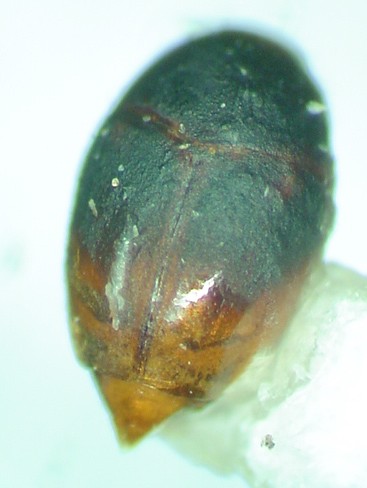
|
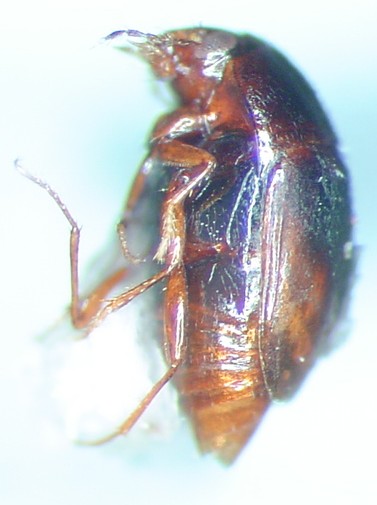
|
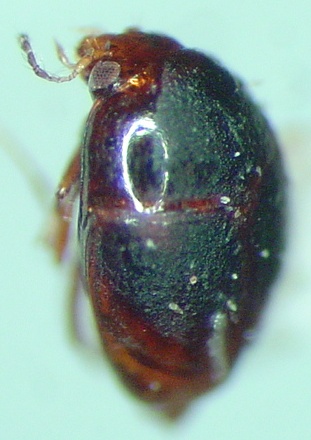
|
|
Scaphisoma lacustris or favescens |
Scaphisoma lacustris or favescens |
Scaphisoma lacustris or favescens |
Baeocera Erichson 1845
Five species of this genus are recorded from Atlantic Canada. They are commonly collected in forest leaf litter and around rotting logs, often associated with various fungi, but the only species which have been reared breed in slime moulds (Newton et al. 2001).
Löbl & Stephan (1993) is the authoritative reference for this genus. Some species in this complicated genus (38 species) can only be reliably determined by an examination of the genitalia. Löbl & Stephan (1993) make the following bionomic notes:
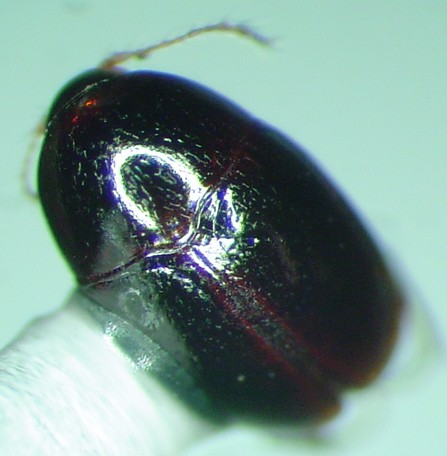
|
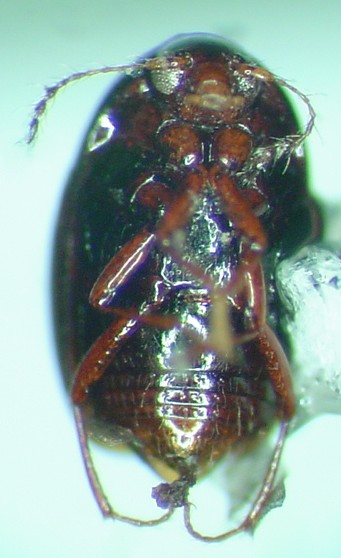
|
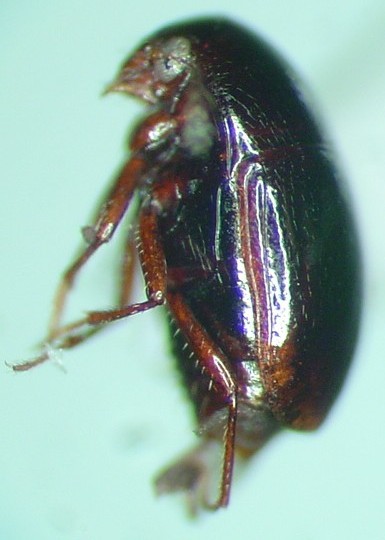
|
|
Baeocera apicalis |
Baeocera apicalis |
Baeocera apicalis |
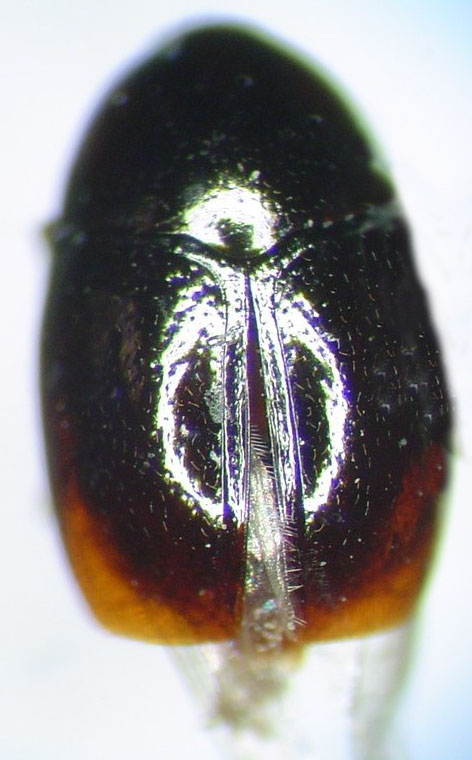
|

|
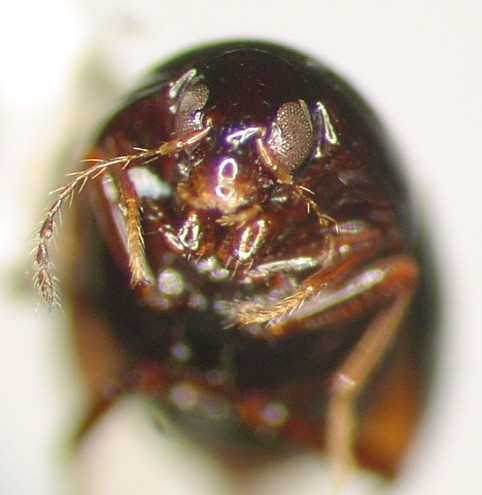
|
|
Baeocera congenera |
Baeocera congenera |
Baeocera congenera |
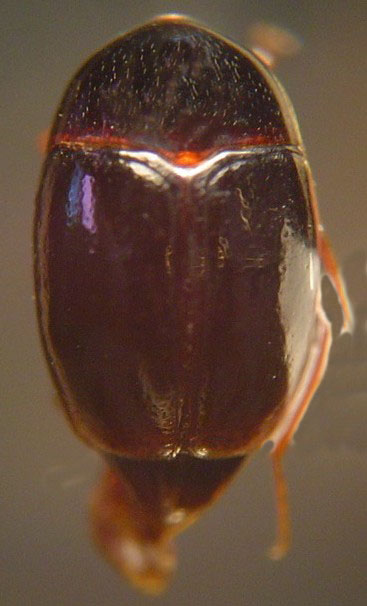
|
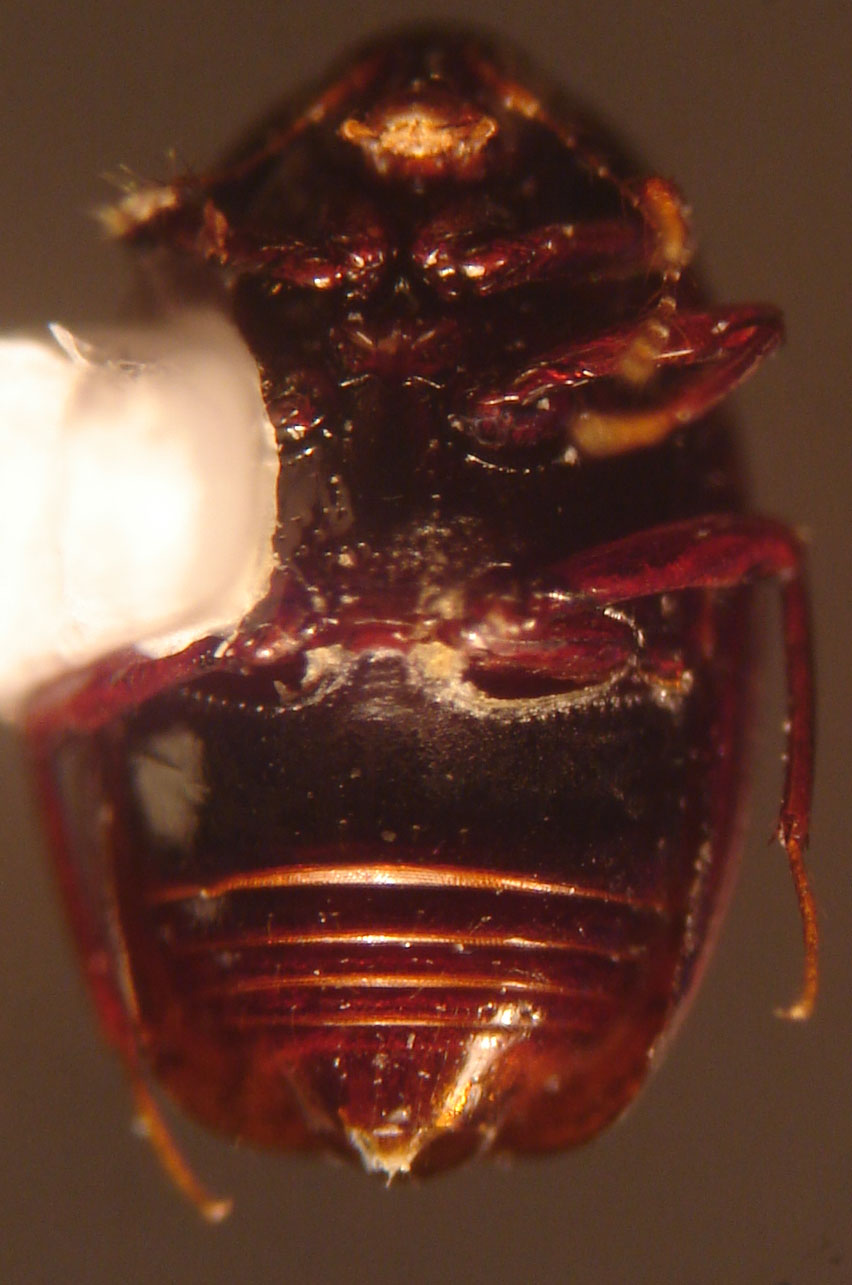
|
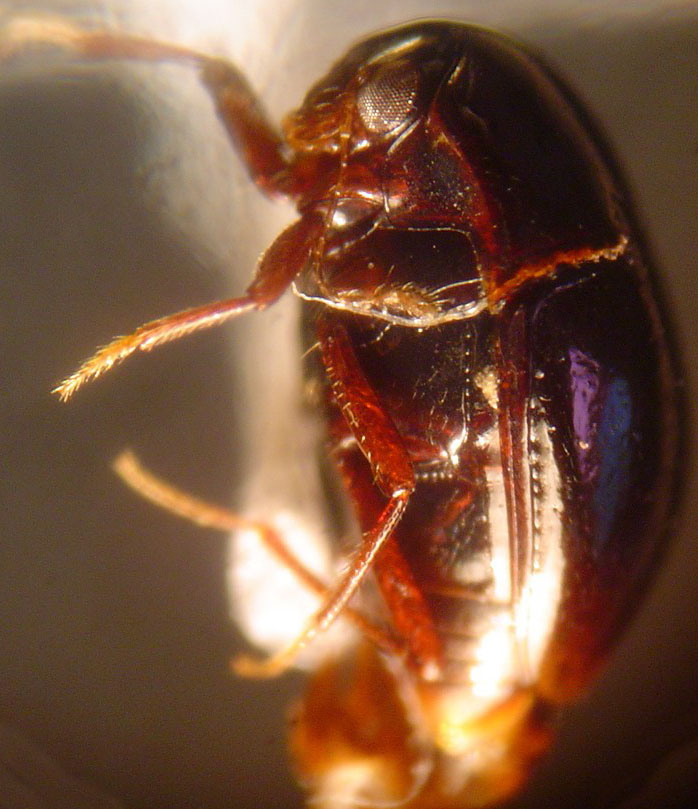
|
|
Baeocera youngi |
Baeocera youngi |
Baeocera youngi |
Note: no images of Baocera deflexa and Baeocera indistincta are yet available - but hopefully soon!
References
Campbell, M. J. 1991. Scaphidinae: Shining Fungus Beetles. In Bousquet, Y. Checklist of Beetles of Canada and Alaska. Agriculture Canada Publication 1861/E. pp. 124-125.
Cornell, J. F. Jr. 1967. A taxonomic study of Eubaeocera new genus (Coleoptera: Scaphidiidae) in North America north of Mexico. Coleopterists Bulletin, 21(1): 1-17
Downie, N. M. & Arnett, R. H. Jr. 1996. The Beetles of Northeastern North America. Sandhill Crane Press. Gainsville, Florida. 1721 pp.
Löbl, I. 1987. Notes synonymiques sur trois Scaphidiidae (Coleoptera) néarctiques. Mitt. schweitz. ent. Ges., 60: 315-317.
Löbl, I. & Stephan K. 1993. A review of the species of Baeocera Erichson (Coleoptera: Staphylinidae: Scaphidiinae) of America north of Mexico. Revue Suisse de Zoologie, 100(3): 675-733.
Newton, A. F., Thayer, M. K., Ashe, J. S., and Chandler, D.S. 2001. Staphylinidae Latreille, 1802 In Arnett, R. H. Jr. & Thomas, M. C. [ed.] American Beetles, Volume 1: Archostemata, Myxophaga, Adephaga, Polyphaga: Staphyliniformia. CRC Press, Boca Raton, USA. pp. 272-418.
(c) All rights reserved. Christopher Majka & Empty Mirrors Press